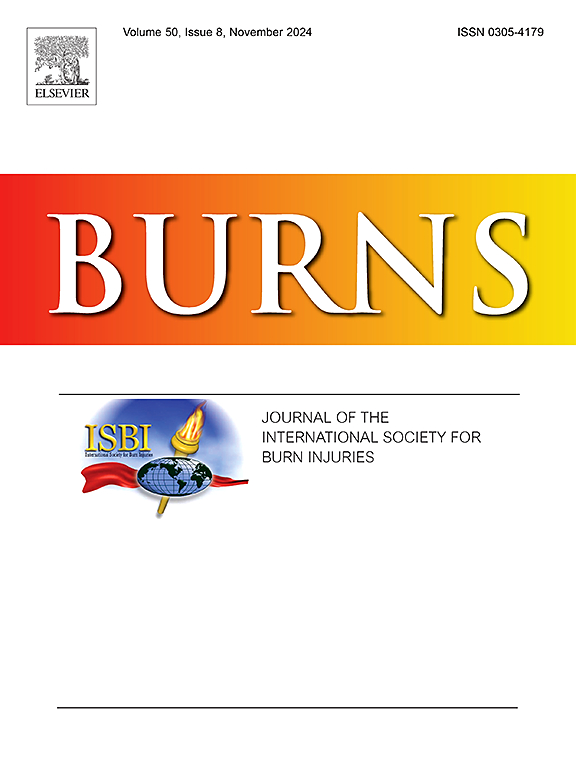人羊膜上皮干细胞条件培养基(haec - cm)在小鼠烧伤模型中减少炎症并促进伤口愈合
IF 2.9
3区 医学
Q2 CRITICAL CARE MEDICINE
引用次数: 0
摘要
本研究旨在评估人羊膜上皮干细胞条件培养基(haec - cm)对深二度烧伤小鼠模型烧伤创面愈合和炎症减少的影响。研究结果表明,haec - cm在14天内显著提高了烧伤创面愈合的主要指标。每日给予haec - cm治疗21天后,创面愈合率明显高于对照组。heec - cm处理的烧伤组织中CD31浓度显著升高,髓过氧化物酶(MPO)水平降低。同时,对hAECs-CM的抗菌效果进行了评估,表明hAECs-CM可减轻烧伤引起的感染。HE和Masson染色结果显示,与模型组相比,治疗明显减少炎症和胶原沉积,而haec - cm - bi组真皮结缔组织和新生血管均增强。综上所述,使用haec - cm可以加速伤口愈合过程,减轻烧伤感染。本文章由计算机程序翻译,如有差异,请以英文原文为准。
Human amniotic epithelial stem cells-conditioned media (hAECs-CM) reduces inflammation and promotes wound healing in a mouse burn model
This study aimed to assess the impact of human amniotic epithelial stem cells-conditioned medium (hAECs-CM) on the healing of burn wounds and the reduction of inflammation in a mouse model of deep second degree burns. The findings indicated that hAECs-CM markedly enhanced the primary metrics of burn wound healing within a brief duration of 14 days. The rate of wound healing was substantially greater than that of the control group following 21 days of treatment with daily administration of hAECs-CM. The CD31 concentration was markedly elevated in burn tissues treated with hAECs-CM, whereas the myeloperoxidase (MPO) level was reduced. Simultaneously, the antibacterial efficacy of hAECs-CM was assessed, indicating that hAECs-CM may alleviate infections generated by burns. HE and Masson staining results indicated that the treatment markedly diminished inflammation and collagen deposition relative to the model group, while both connective tissue and neovascularization were enhanced in the dermis of the hAECs-CM-BI group. In conclusion, the utilization of hAECs-CM may expedite the wound healing process and mitigate burn infections.
求助全文
通过发布文献求助,成功后即可免费获取论文全文。
去求助
来源期刊

Burns
医学-皮肤病学
CiteScore
4.50
自引率
18.50%
发文量
304
审稿时长
72 days
期刊介绍:
Burns aims to foster the exchange of information among all engaged in preventing and treating the effects of burns. The journal focuses on clinical, scientific and social aspects of these injuries and covers the prevention of the injury, the epidemiology of such injuries and all aspects of treatment including development of new techniques and technologies and verification of existing ones. Regular features include clinical and scientific papers, state of the art reviews and descriptions of burn-care in practice.
Topics covered by Burns include: the effects of smoke on man and animals, their tissues and cells; the responses to and treatment of patients and animals with chemical injuries to the skin; the biological and clinical effects of cold injuries; surgical techniques which are, or may be relevant to the treatment of burned patients during the acute or reconstructive phase following injury; well controlled laboratory studies of the effectiveness of anti-microbial agents on infection and new materials on scarring and healing; inflammatory responses to injury, effectiveness of related agents and other compounds used to modify the physiological and cellular responses to the injury; experimental studies of burns and the outcome of burn wound healing; regenerative medicine concerning the skin.
 求助内容:
求助内容: 应助结果提醒方式:
应助结果提醒方式:


